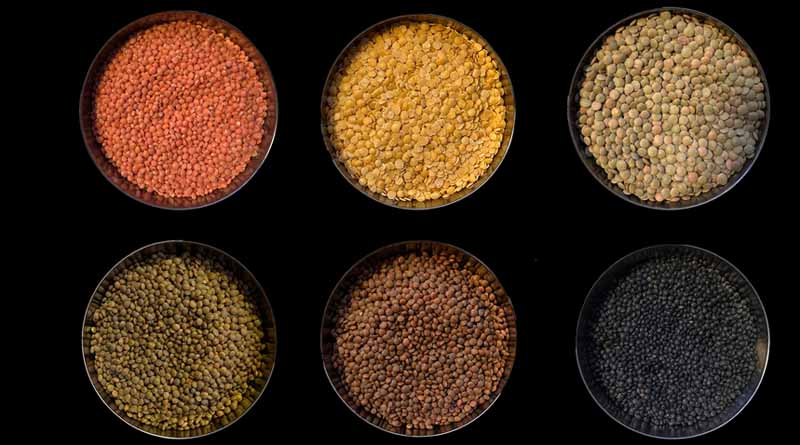Lentils: The Tiny Giants of Nutrition and Food Security
Pulses, the dried edible seeds of plants in the legume family, have been a staple in diets around the world for millennia. As we approach World Pulses Day, our focus turns to one of the most versatile members of the group, the lentil.
10 February 2024, Germany: Tiny as they are, lentils are nature’s mighty warriors against hunger and heroes of sustainability. They stand out for their nutritional benefits, environmental resilience, and sheer variety. Let’s go behind the scenes and discover 5 facts about these highly versatile and delicious pulses.
1. A Dazzling Array of Colors and Shapes
From the robust green lentils of Puy to the delicate red lentils favored in South Asian cuisines, this diversity is not just culinary wealth but also a key to addressing nutritional deficiencies worldwide. Rich in proteins, fiber, and essential nutrients, lentils offer a sustainable alternative protein source, especially important in regions where meat is scarce or expensive.
2. Diversity Everywhere
Different varieties are adapted to various climates and soil types, making them versatile crops for farmers around the globe. This adaptability is crucial as the climate changes and becomes less predictable, as it allows farmers to cultivate lentils in areas where other crops might fail, ensuring a continuous and accessible food supply.
3. From Farm to Table
Lentils originated in the Fertile Crescent of the Near East, but have expanded across an impressive 5.5 million hectares globally—an area similar to the entire country of Costa Rica. Canada, in particular, produced more than 2 million tons of lentils in 2022, claiming about 35% of global lentil production, with India not far behind with 19% and Australia with 15%.
However, beneath the surface of these impressive production statistics lies a critical issue: the preservation of lentil diversity in genebanks to provide us with options for the future.

4. The Importance of Genetic Diversity
The genetic diversity of lentils is a treasure for food security. Different varieties have resistance to pests and diseases, tolerance to drought and poor soil conditions and the ability to adapt to changing environmental stresses. However, this diversity is under threat, for example from industrial farming practices that favor uniformity. Preserving the genetic wealth of lentils means maintaining a wide range of cultivars, not just for their current value but also as a reservoir of traits that might be needed to combat future agricultural challenges.
By maintaining and making available a wide array of lentil varieties, genebanks not only ensure the crop’s future adaptability but also contribute to nutritional security by facilitating the development of varieties with improved nutritional profiles. And when it comes to genebanks, ICARDA (International Center for Agricultural Research in the Dry Areas) emerges as a champion in this global effort, holding the largest collection of lentil germplasm, including related wild species, which are indispensable for research and the improvement of cultivated lentils.
Conservation efforts both in situ (on farms) and ex situ (in genebanks) play a critical role in safeguarding lentil diversity. These efforts ensure that traditional and lesser-known lentil varieties are not lost to the homogenizing forces of modern agriculture. By supporting these initiatives, we can help maintain the genetic library that breeders need to develop resilient and productive lentil crops, vital for future generations.

5. Lentils in Global Cuisines
Lentils star in dishes from India’s dhal to Italy’s zuppa di lenticchie (lentil soup). Their versatility in the kitchen is unmatched, easily absorbing flavors from an array of spices and herbs. This culinary adaptability makes lentils a beloved ingredient in traditional and modern dishes alike, offering endless possibilities for innovation in the kitchen.
Encouraging the consumption of diverse lentil varieties not only enriches our diets but also supports the markets for these crops, incentivizing farmers to continue growing them. By choosing diverse lentil types, consumers can contribute to conserving genetic diversity and enjoy health benefits.
As we celebrate World Pulses Day, let’s give a standing ovation to these leguminous legends to remember the vital role that lentils play in global food security, environmental sustainability, and culinary diversity. Preserving the wide array of lentil varieties is more than an act of culinary preservation: it is a commitment to the health of our planet and of future generations.
Supporting lentil diversity means choosing a variety of lentils at the store, supporting local and global conservation efforts, and encouraging policies that promote biodiversity in agriculture. Together, we can ensure that lentils continue to nourish people and the planet for generations to come.
Also Read: World Pulses Day 2024: Will India become self-sufficient in Pulses?
(For Latest Agriculture News & Updates, follow Krishak Jagat on Google News)















